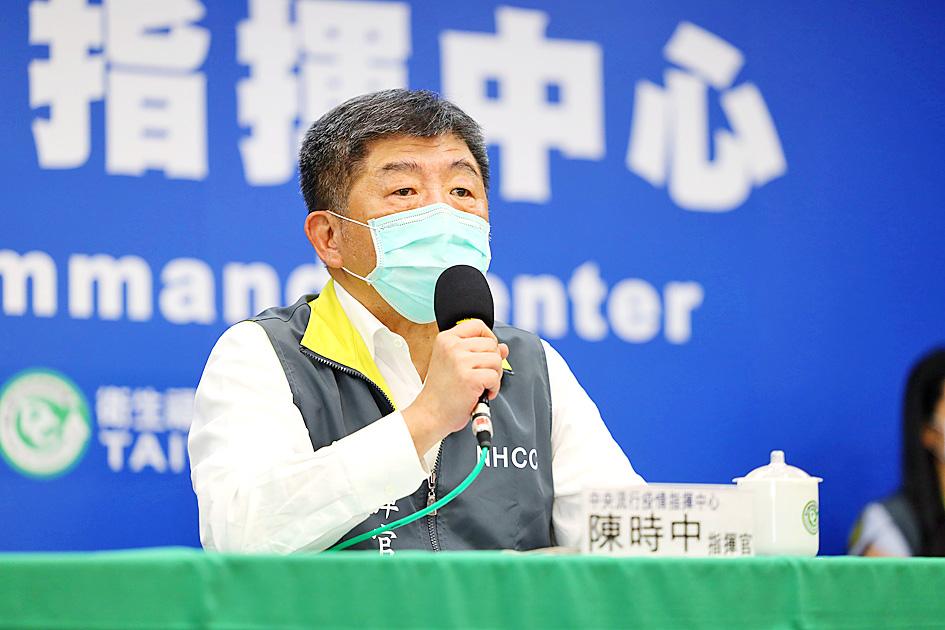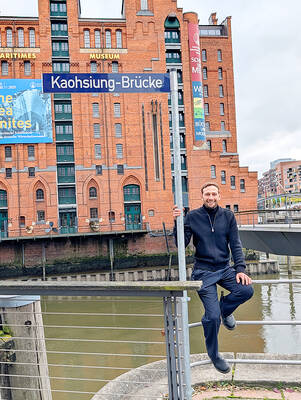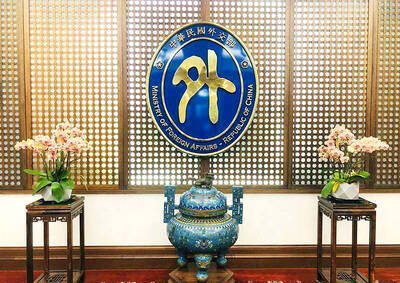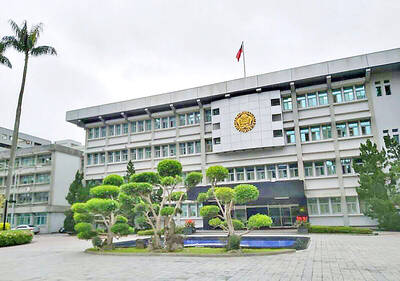No new cases of COVID-19 were reported yesterday, marking the 27th consecutive day without new domestic cases in Taiwan, the Central Epidemic Command Center (CECC) said yesterday.
CECC specialist advisory panel convener Chang Shan-chwen (張上淳) said that 66,460 suspected cases have been reported from Jan. 15 to Thursday, and 440 have tested positive for the disease.
Among the infected patients, 308 (70 percent) were asymptomatic or had mild symptoms, 96 (21.8 percent) had pneumonia and 36 (8.2 percent) had serious pneumonia or acute respiratory distress syndrome, he said.

Photo provided by the Central Epidemic Command Center via CNA
A total of 361 patients (82 percent) have left isolation after testing negative three consecutive times, 352 (80 percent) have been discharged from hospitals, 82 (18.6 percent) remain hospitalized and six (1.4 percent) have died, he said.
Chang said that among 24 patients who had or have depended on ventilators, as of yesterday only three remain on ventilators, and one still requires extracorporeal membrane oxygenation.
No COVID-19 cases have been detected among medical practitioners and long-term care facility workers, he said, adding that expanded criteria for testing them were implemented on March 30.
“It is likely that the total number of cases [in Taiwan] would remain about the same, with maybe a few sporadic imported cases still being reported,” Chang said.
“With COVID-19’s 14-day incubation period, if no new case has been detected in local communities for two incubation periods — 28 days — from a public health perspective, we could view our communities as safe,” he said.
Taiwan has an infection rate of about 18.6 confirmed cases per 1 million people and a death rate of about 0.3 deaths per 1 million, which are lower than Organisation for Economic Co-operation and Development member countries, Chang said.
The infection rates in several European countries and the US are higher than 3,000 cases per 1 million, he added.
In other news, Minister of Health and Welfare Chen Shih-chung (陳時中), who heads the center, said that as spectators at CPBL baseball games on Friday were well-behaved in practicing personal disease prevention measures in the first two games opened to the public, the CECC is considering raising the maximum number of spectators per game from 1,000 to 2,000.
Additionally, Department of Medical Affairs Director-General Shih Chung-liang (石崇良) said that from yesterday, regulations for visitors to intensive care units, hospices and palliative care units in hospitals have been relaxed, allowing for a maximum of two visitors per hospital bed in a given visiting period.
Each hospital would determine the visiting hours, and hospitals are required to control the flow of visitors and implement disinfection measures, he said.

The German city of Hamburg on Oct. 14 named a bridge “Kaohsiung-Brucke” after the Taiwanese city of Kaohsiung. The footbridge, formerly known as F566, is to the east of the Speicherstadt, the world’s largest warehouse district, and connects the Dar-es-Salaam-Platz to the Brooktorpromenade near the Port of Hamburg on the Elbe River. Timo Fischer, a Free Democratic Party member of the Hamburg-Mitte District Assembly, in May last year proposed the name change with support from members of the Social Democratic Party and the Christian Democratic Union. Kaohsiung and Hamburg in 1999 inked a sister city agreement, but despite more than a quarter-century of

The Ministry of Foreign Affairs (MOFA) yesterday expressed “grave concerns” after Singaporean Prime Minister Lawrence Wong (黃循財) reiterated the city-state’s opposition to “Taiwanese independence” during a meeting with Chinese Premier Li Qiang (李強). In Singapore on Saturday, Wong and Li discussed cross-strait developments, the Singaporean Ministry of Foreign Affairs said in a statement. “Prime Minister Wong reiterated that Singapore has a clear and consistent ‘one China’ policy and is opposed to Taiwan independence,” it said. MOFA responded that it is an objective fact and a common understanding shared by many that the Republic of China (ROC) is an independent, sovereign nation, with world-leading

Temperatures in northern Taiwan are forecast to reach as high as 30°C today, as an ongoing northeasterly seasonal wind system weakens, the Central Weather Administration (CWA) said. CWA forecaster Tseng Chao-cheng (曾昭誠) said yesterday that with the seasonal wind system weakening, warmer easterly winds would boost the temperature today. Daytime temperatures in northern Taiwan and Yilan County are expected to range from 28°C to 30°C today, up about 3°C from yesterday, Tseng said. According to the CWA, temperature highs in central and southern Taiwan could stay stable. However, the weather is expected to turn cooler starting tonight as the northeasterly wind system strengthens again

The Ministry of Justice Investigation Bureau (MJIB) has been investigating nine shell companies working with Prince Holding Group, and the Taipei District Prosecutors’ Office is seeking further prosecution of alleged criminals, a source said yesterday. The nine companies and three Taiwanese nationals were named by the US Department of the Treasury’s Office of Foreign Assets Control (OFAC) on Oct. 14 as Specially Designated Nationals as a result of a US federal court indictment. Prince Holding founder Chen Zhi (陳志) has been charged with fraud, conspiracy, money laundering and overseeing Prince Holding’s suspected forced-labor camps in Cambodia, the indictment says. Intelligence shared between Taiwan,